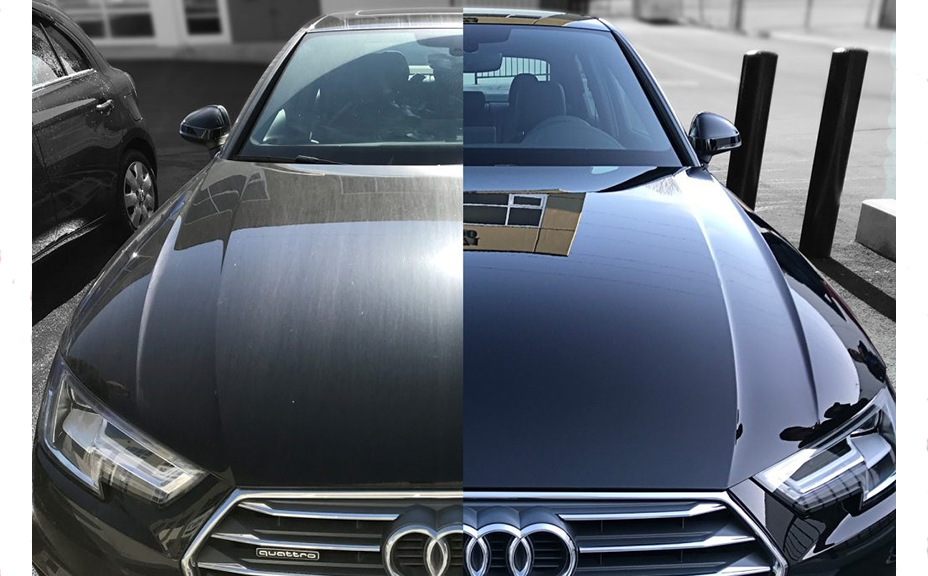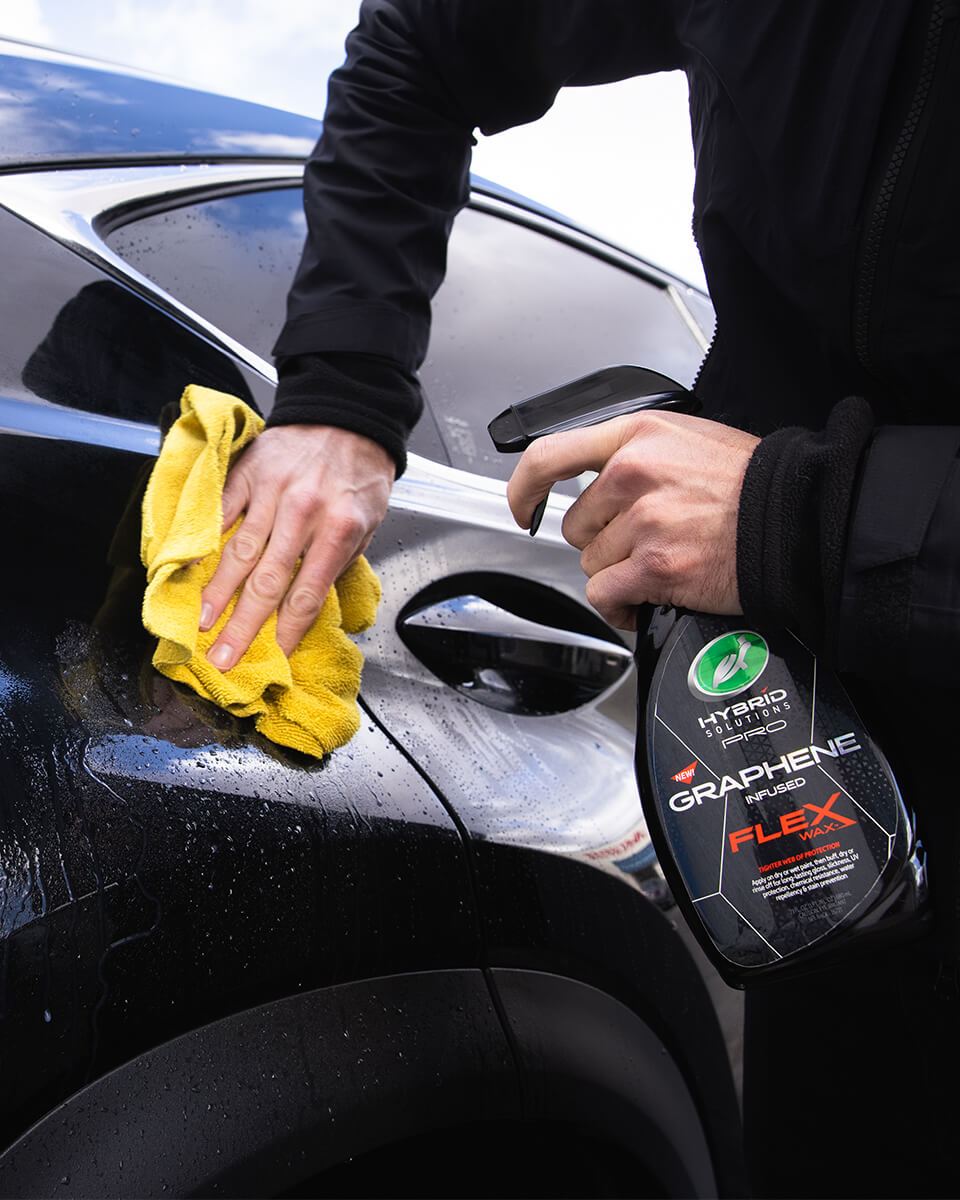Why families prefer Ceramic Coating Newark for low maintenance
Wiki Article
Exploring the Scientific Research Behind Car Ceramic Coating and Its Safety Qualities
The scientific research of car ceramic coating provides a remarkable study in advanced automotive security. Made up mostly of silicon dioxide and polymers, these finishes develop a robust bond with vehicle paint. This interaction boosts longevity against environmental hazards while offering hydrophobic advantages. The complexities of exactly how these finishes work and their long-term benefits stay much less recognized. Ceramic Coating Newark. Unboxing these details discloses why ceramic coatings are ending up being a favored choice for automobile careWhat Is Ceramic Coating?
Ceramic coating is a fluid polymer that chemically bonds to the surface of a car's paint. This sophisticated protective layer boosts toughness and supplies exceptional resistance to environmental aspects. Unlike standard wax or sealants, which provide short-lived protection, ceramic coatings develop a durable shield that can endure rough problems such as UV rays, acidic pollutants, and extreme climate. When applied correctly, the coating forms a hydrophobic surface area, causing water to bead and slide off, which assists in keeping the car's cleanliness. Furthermore, it offers boosted gloss and deepness to the paint, making the automobile appear even more refined and vibrant. The application procedure typically includes extensive surface area prep work, including cleaning and polishing, to assure peak bonding. Consequently, ceramic coatings are becoming increasingly preferred amongst car fanatics and those looking for to secure their investments, guaranteeing to preserve the automobile's visual appeal while reducing the frequency of maintenance.The Structure of Ceramic Coatings
The complex solution of ceramic finishes mostly contains silicon dioxide (SiO2), which is originated from natural resources like quartz and sand. This essential element provides the structure for the coating's toughness and protective top qualities. Along with SiO2, ceramic coverings often include numerous polymers and additives that improve bond, versatility, and resistance to ecological factors. These compounds function synergistically to produce a durable barrier versus impurities such as dirt, chemicals, and UV rays.Furthermore, some formulations include titanium dioxide (TiO2) or other nanomaterials, which can augment the coating's hydrophobic residential properties, causing better water repellency. The accurate make-up can vary considerably among producers, affecting efficiency and long life. Eventually, the mix of these components finishes in a safety layer that not just improves the aesthetic allure of cars but additionally offers to lengthen their life expectancy by shielding the surface from possible damages.How Ceramic Coatings Work
Recognizing just how ceramic finishings work includes exploring their chemical composition, which adds to their protective qualities. The application procedure is crucial for accomplishing ideal outcomes, while longevity and sturdiness factors establish the coating's performance in time. With each other, these elements highlight the advantages and efficiency of ceramic coatings for car protection.Chemical Make-up Explained
While many car proprietors seek long-lasting security for their automobiles, the chemical make-up of ceramic finishes plays a critical duty in their performance. These coverings mostly contain silicon dioxide (SiO2), which is stemmed from natural minerals. This compound creates a solid bond with the automobile's paint, developing a durable, safety layer. Furthermore, several ceramic coatings have titanium dioxide (TiO2), boosting their hydrophobic buildings and resistance to UV rays. The presence of polysiloxanes can even more enhance adaptability and longevity. With each other, these aspects add to the coating's capacity to ward off water, dust, and impurities, while likewise providing a high-gloss surface. Recognizing this chemical structure aids car owners appreciate the robust defense provided by ceramic finishes.Application Process Overview
Applying ceramic finishes includes a meticulous procedure that guarantees suitable bonding and defense for the vehicle's surface area. Comprehensive cleaning and decontamination of the car's exterior are done to eliminate dust, grime, and previous waxes. This action confirms that the surface area is devoid of contaminations that might impede bond. Following this, click this site the paint is often brightened to enhance quality and get rid of any type of imperfections. When prepared, the ceramic coating is used in tiny areas using an applicator pad, permitting for consistent coverage. The coating is after that entrusted to cure, creating a strong chemical bond with the surface. Proper treating times and conditions are essential, as they validate the coating attains its maximum effectiveness and protective top qualities.Longevity and Durability Variables
Ceramic finishings are created to provide long-lasting security with their sophisticated chemical structure, which creates a durable barrier versus environmental impurities. The longevity of these coverings is affected by variables such as the density of the application, the high quality of the item, and the visit here problems under which the lorry is revealed. High-quality ceramic coatings can last a number of years, resisting scrapes, UV rays, and chemical spots. Correct maintenance, consisting of regular cleaning and periodic reapplication, can further improve longevity. In addition, ecological aspects like climate and direct exposure to contaminants can influence the lifespan of the coating. Overall, when applied and preserved appropriately, ceramic finishings offer outstanding durability, making them a popular option for car lovers looking for to maintain their vehicle's look.Hydrophobic Residences and Water Repellency
Hydrophobic homes are a characteristic of top quality car ceramic coatings, substantially boosting the lorry's surface performance. These finishes develop a molecular bond with the car's paint, causing a surface that wards off water properly. When water comes into call with a ceramic-coated surface area, it beads up and rolls off, lessening the quantity of liquid that stays on the paint. This habits not just adds to a visually pleasing appearance but also decreases the accumulation of contaminants such as dirt, gunk, and roadway salts.The improved water repellency brings about much easier cleaning and upkeep, as much less initiative is required to get rid of unwanted materials. In enhancement, the hydrophobic nature of ceramic finishings helps in protecting against water areas, which can mar the finish of uncoated surface areas. In general, the consolidation of hydrophobic properties in ceramic finishings plays a vital function in keeping the car's pristine appearance while streamlining maintenance.Protection Against Scratches and UV Damage
Car ceramic finishings use significant defense against scratches and UV damages. The scratch resistance mechanism creates a long lasting layer that soaks up impacts, while the UV securing benefits help preserve the automobile's paint stability over time. Together, these features add to a longer-lasting and visually appealing coating.Damage Resistance System
Utilizing sophisticated innovation, ceramic coatings give a robust guard versus scratches and UV damage, enhancing the durability and look of vehicle surface areas. The scrape resistance system of these coverings is connected to their unique molecular framework, which forms a resilient bond with the car's paint. This bond develops a hard, protective layer that can take in impacts and stand up to abrasions. Furthermore, the smooth surface area of the coating reduces friction, making it difficult for impurities to stick and cause scrapes. The chemical make-up of ceramic layers commonly consists of nanoparticles that strengthen the safety layer, additional improving its resilience. Vehicles treated with ceramic finishes exhibit markedly enhanced scratch resistance compared to typical wax or sealers, guaranteeing a beautiful coating over time.UV Protecting Conveniences
The safety qualities of ceramic coatings prolong past scrape resistance to consist of considerable UV securing benefits. These coverings produce a durable obstacle that shows hazardous ultraviolet rays, guarding the vehicle's paint and underlying materials. Long term exposure to UV radiation can lead to fading, oxidation, and damage of the paint finish. By integrating ceramic coverings, automobile proprietors can effectively minimize these risks, preserving the aesthetic allure and stability of their cars and trucks. In addition, the UV blocking properties add to improved long life, decreasing the regularity of painting and maintenance. Inevitably, the assimilation of ceramic coatings offers a comprehensive option for safeguarding lorries from the harmful results of sun direct exposure, ensuring a sustained, lively look in time.The Long life and Upkeep of Ceramic Coatings

Often Asked Inquiries
Can Ceramic Coating Be Applied to Any Kind Of Sort Of Vehicle?
Ceramic coating can be put on various sorts of vehicles, including vehicles, vehicles, and bikes. Surface area preparation and compatibility with details materials are essential for ideal bond and performance of the coating.Exactly How Much Does Ceramic Coating Normally Expense?
Ceramic coating typically sets you back in between $500 and $2,000, depending on variables such as automobile size, coating top quality, and specialist application. The financial investment can supply long-lasting defense and boost the lorry's look over time.
Is Specialist Application Essential for Ideal Outcomes?
The necessity of specialist application often depends on desired results. Specialists normally assure proper surface area preparation and application techniques, leading to excellent bonding and durability of the coating, which may be challenging for unskilled people to achieve.Can Ceramic Coatings Be Removed or Fixed?
Ceramic coverings can be gotten rid of or fixed, though the procedure may require certain solvents or strategies - Ceramic Coating Newark. Proper elimination is vital to stay clear of damages to the underlying surface area, emphasizing the significance of professional assistance for suitable outcomesHow Does Porcelain Coating Contrast to Standard Wax?
The comparison between ceramic coating and standard wax exposes that ceramic finishings offer exceptional sturdiness, enhanced defense versus environmental impurities, and longer-lasting shine, while wax needs a lot more constant application and supplies less total resistance to damages.Report this wiki page